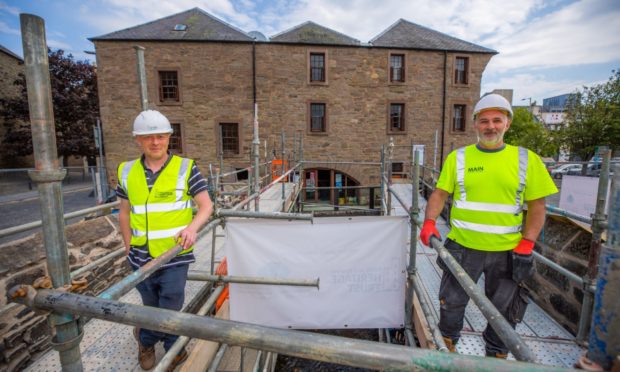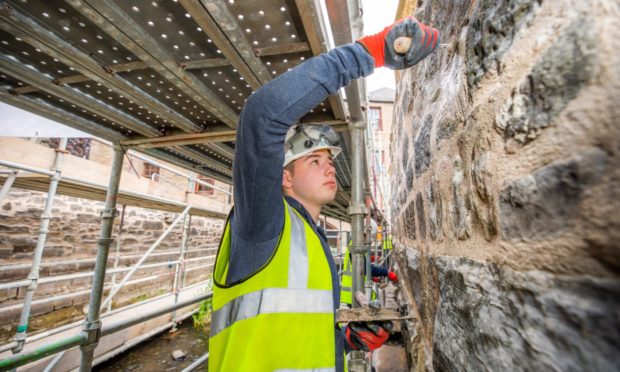Perth and Kinross youngsters have been given the chance to train in stonemasonry amid a shortage of people with the skills to conserve heritage buildings.
The Perth and Kinross Heritage Trust (PKHT) held training courses to encourage more young people to consider going into the industry.
The classes allowed participants from schools across Perth to spend five days getting a taste of the skills on the historic lade walls next to Perth’s Lower City Mills.
‘Identified shortage’
The PKHT believes stonemasonry is key to ensuring the natural character of Perth and Kinross’ towns’ and countryside’s structures are kept up.
Traditional Building Skills Training Officer Ciarán Quigley said: “Due to an identified shortage of enough people with the skills to conserve the built environment, we are offering young people at career choice stage – and more mature people who would like to consider changing career paths – the opportunity to try their hands at the ancient craft of stonemasonry.
“They worked on a real conservation project – the walls of the Perth City lade, a 900 year old man-made water course.
“This water course feeds the most powerful waterwheel still turning in Scotland.
“We are initiating a project of again opening up this traditional corn mill, closed to the public for almost two decades.”
He added: “It is a project which we very much intend to help post-Covid recovery in Perth and create further employment and training opportunities here.”
New skills
School pupils from the Fair City were keen to learn new skills and were enthusiastic in their participation.
Liam Cairney and Matthew Hunter from Perth Grammar School were among the participants.
Liam said: “Perth Grammar School gave me and Matthew an opportunity to come and do this and try something new – it’s a new experience.
“It’s not often things like this come up so we are getting a chance to try something new.”
Training projects
The PKHT says the skill is vital in the repair and maintenance of Scotland’s traditional pre-1919 buildings.
Changes in construction materials and techniques since the end of the First World War have led to a decline in the skills used to construct and maintain historic structures – including stonemasonry.
Its training projects are designed for a wide variety of participants from school pupils to community payback workgroups.

